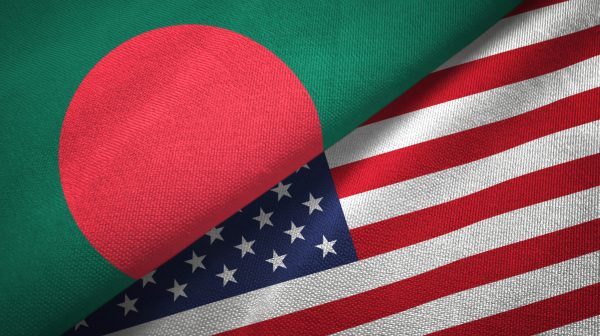The Trans-Pacific Partnership (TPP) might be the most influential deal that never was.
Rooted in a much-smaller trade agreement from 2005, TPP negotiations began expanding in 2008 through the interest of the U.S. and other economic powers such as Japan and Australia. Widely seen as a means of hedging China’s growing economic power, the TPP would eventually include 12 member states accounting for a collective 40% of global GDP.
But ambitious as it was, the TTP was not to be. This week and next mark key anniversaries in the in-utero death of the agreement, which has still managed from beyond the grave to play a major role in the economic and geopolitical development of the Asia-Pacific.
Besides a role of accelerating the development of other free trade agreements in the region, the TTP lives on through a resurrected form of the agreement: The Comprehensive and Progressive Agreement for Trans-Pacific Partnership (CPTPP), signed in 2018.

“We have never seen such a big, mega-trade deal that covers so many countries, that represents such a big chunk of the world’s GDP all put into one [high-standard] agreement,” said Juita Mohamad, director of the economics and business unit at the Kuala Lumpur think-tank IDEAS Malaysia.
“For so many different countries to come together with different levels of development and in the midst of trade tensions. I think this is something that sets the tone for the region at least.”

In exchange for eliminated or steeply reduced tariffs, the TPP required members to make sometimes-painful economic reforms. These ensured overall liberalisation but also mandated high standards in areas such as labour rights, environmental protection and respect for intellectual property.
Driven by the U.S., negotiators signed the deal on 4 February, 2016. Less than a year later, on 23 January, 2017, U.S. President Donald Trump yanked his country from its own agreement, scuttling it for the remaining members.
The protectionist lurch of the U.S. cleared the way for China to expand further, including through a central role in another mega-deal, the Regional Comprehensive Economic Partnership (RCEP). Viewed as a response to the TPP, the deal was largely brokered by ASEAN starting in 2012, was signed in 2020 and now covers about a third of global GDP.

Besides China, it includes as signatories all 10 ASEAN member-states, plus Japan, South Korea, Australia and New Zealand. The RCEP demands much fewer standards-based reforms of its signatories than the CPTPP, but also provides less market access through tariff reductions.
The U.S. did not return to the negotiating table, which left Japan to regroup the TPP members to sign off on the CPTPP in 2018. Today, that successor deal also includes Australia, Canada, Mexico, New Zealand, Peru and Chile, along with four partners in Southeast Asia: Malaysia, Vietnam, Brunei and Singapore.
Beyond them in ASEAN, Thailand, the Philippines and Indonesia have expressed some interest in joining. The remaining bloc members Cambodia, Laos and Myanmar are unlikely for now to meet the agreement’s standards.
China has also requested membership to the CPTPP, but seems similarly unlikely to do so.
The big-power rivalry of the original TPP still remains, though the terms have shifted. China’s continued growth has expanded its influence in Southeast Asia, said Huynh Tam Sang, a lecturer of international relations at the University of Social Sciences and Humanities in Ho Chi Minh City, adding to the geopolitical calculus of signing onto the CPTPP.
“Regional countries are really interested in the rise of China, and they don’t want an economic and political landscape that is dominated by that rise,” Huynh said. “In trying to diversify their economic partners, they can get some leverage to balance against China.”
For those looking to play the balancing act, the CPTPP has at least one key weakness – the lack of access to the U.S. market. Though the U.S. just last summer dipped a toe back into the region with the announcement of its new Indo-Pacific Economic Framework, Mohamad from IDEAS said that platform found only a “lukewarm” response from potential partners.
That’s because the U.S. made clear the IPEF is not a trade agreement, and does not – at least at this time – provide any expanded access to its massive economy. Instead, the framework only extends another attempt at the standards-setting part of the TPP without moving the bar on tariffs or other protective measures.
Though Mohamad said countries in the region have welcomed a renewed effort at cooperation with the U.S., she believed they had hoped to get back on track to a binding free trade agreement, especially in the wake of the country’s pullout from the TPP with no further renegotiations.
“We’re not really excited because, at the end of the day, there’s no concrete cooperation in terms of market access,” she said. “While I do understand that the IPEF is still being negotiated, for Southeast Asian countries like Malaysia, I think what matters most when it comes to the U.S. is getting market access.”
The U.S. has not shown any signs of joining the CPTPP, with both Mohamad and Huynh suggesting the country’s domestic politics continue to favour protectionism. However, the deal inspired by its former vision appears to be successful on its own terms, said Kati Suominen, an adjunct fellow with the Washington-based think-tank CSIS.
“This was a way to bring greater coherence to the Asia Pacific trading system, to avoid what the trade economists have called a spaghetti bowl of different kinds of criss-crossed agreements,” said Suominen, who is also the CEO of analytics firm Nextrade Group. “Now, its success is measured by how many countries are wanting to get in. Many are, so it’s probably going to be a growing bloc.”





















Discussion about this post